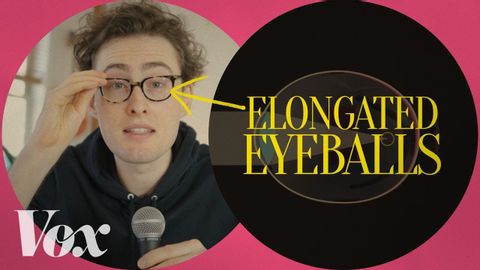為什麼大家現在都需要眼鏡?(Why so many people need glasses now)
Nina Kuo 發佈於 2023 年 04 月 07 日  沒有此條件下的單字
沒有此條件下的單字- v.t./i.伸展(肢體等);拉長
- n.伸展;一段路程、區域;物品連續排列;一段時間;階段
US /ˈɛvɪdəns/
・
UK /'evɪdəns/
- n. (u.)證據;證據 (法律)
- v.t.表明;證明
US /'doʊpəmi:n/
・
UK /'dəʊpəmi:n/
US /ˌɛpɪˈdɛmɪk/
・
UK /ˌepɪ'demɪk/
- adj.傳染性的;流行病的
- n. (c./u.)疫情
